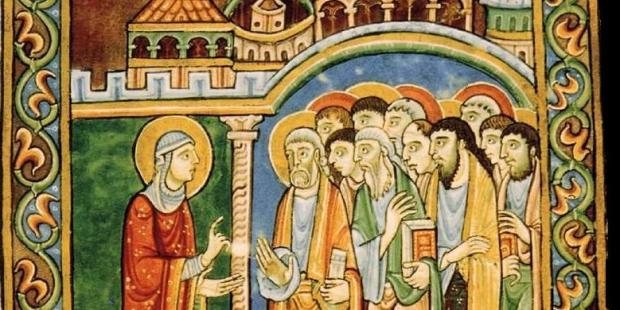In just a few days Catholics will celebrate the Feast of Saint Mary Magdalene. This post is a reflection I wrote for a Communion Service on December 27, 2018
Christmas Weekday - John 20:1a,2-8
Feast of St. John, Apostle and evangelist (Lectionary: 697)
The verses that make up today’s gospel portion are also the opening verses of the gospel now proclaimed on the July 22 Feast of St. Mary Magdalene in the Church’s lectionary. Mary Magdalene is a figure in the New Testament worth considering, especially since she spent the greater part of the last 1,400 years misrepresented in the western, Catholic imagination as a penitent prostitute. Biblical scholarship however has given us modern Christians the opportunity to rediscover this important figure of early Christianity.
Mary Magdalene is significant, in part, because she is so prominent in the Christian Scriptures: appearing many times in the New Testament and in all four gospels: (Mt 27.55-56, 61; 28.1; Mk 15.40-41, 47; 16:1, 9; Lk 8.2; 24.10; Jn 19.25; 20.1, 11, 16, 18.) Mary was a follower and close companion of Jesus, she stood by Jesus as he died on the cross and, with two other disciples, discovered the empty tomb. Being named in all four resurrection stories, we see that early Christians not only recognized Mary Magdalene as an important figure in Jesus’ earthly life, but also in spreading the message that Jesus is the Christ.
I was blessed to go on pilgrimage to the Holy Land a few years ago where I visited the relatively new archeological site at Magdala, the town from which Mary came. It sits on the west coast of the sea of Galilee, about six miles from Capernaum where Jesus made his home during his ministry. New archeological discoveries of this town and its culture are still coming to light and I think it will be exciting to see how the Church rediscovers and reimagines this early Church leader.
So today, as we read this Easter story during the Christmas season, let us rejoice in the knowledge that Scripture is truly the Living Word of God – always new and always being reborn in the hearts and minds of us Christians. Is this not the message of both Christmas and Easter?...that God is the Living God; that God is the God that gives and sustains all life. And although darkness may come to this world, the birth of a newborn child offers hope. And though death may come to each one of us, is our death not always followed by life? This is the hopeful message of Christmas, and the promise of Easter.
We modern Christians have been given the gift of rediscovering St. Mary of Magdala. How will she evangelize us and bring us closer to her Lord, Jesus? How will she renew our life in Christ? Let us pray: St. Mary Magdalene, pray for us. St. Mary, friend of Jesus – pray for us. St. Mary, first witness to the resurrection – pray for us. St. Mary, apostle to the apostles, pray for us. In the name of the father…










